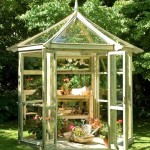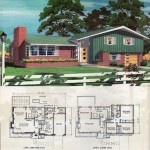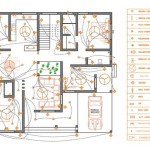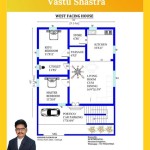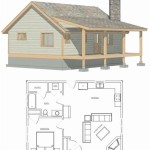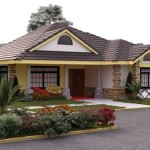SIPS Small House Plans: Efficient Living in Compact Spaces
Structural Insulated Panels (SIPs) are gaining traction in the construction industry as a viable and efficient alternative to traditional framing methods. SIPs offer numerous advantages, particularly in the context of small house plans. These benefits include enhanced energy efficiency, faster construction times, and reduced construction waste. This article explores the application of SIPs in small house designs, outlining the key advantages and considerations for prospective homeowners and builders.
Small house plans, by definition, prioritize efficient use of space. The rise in popularity of small homes reflects a growing interest in sustainable living, minimizing environmental impact, and reducing financial burdens. SIPs align perfectly with these goals, offering a construction method that complements the principles of compact and efficient design.
Understanding Structural Insulated Panels (SIPs)
Structural Insulated Panels consist of an insulating foam core, typically expanded polystyrene (EPS), extruded polystyrene (XPS), or polyurethane, sandwiched between two structural facings, usually oriented strand board (OSB). This composite structure provides inherent strength and insulation, eliminating the need for separate framing and insulation steps in the building process. The panels are manufactured in a factory setting, ensuring consistent quality and precision. Panels can be custom-cut to specific dimensions and incorporate openings for windows and doors, further streamlining the construction process.
The insulating core of the SIP provides excellent thermal resistance, resulting in reduced energy consumption for heating and cooling. The airtight nature of SIP construction minimizes air leakage, further enhancing energy efficiency and creating a more comfortable indoor environment. This superior insulation also contributes to noise reduction, creating a quieter living space. The structural integrity of SIPs allows for larger spans compared to traditional framing, potentially opening up interior design possibilities in small houses.
Advantages of Using SIPs for Small House Plans
The application of SIPs in small house construction provides several compelling advantages over traditional building methods. These benefits contribute to cost savings, improved building performance, and environmental sustainability.
One of the most significant advantages of SIPs is their superior energy efficiency. The continuous insulation provided by the foam core, coupled with the airtight construction, minimizes heat loss in the winter and heat gain in the summer. This results in lower energy bills and a reduced carbon footprint. For small houses, where space is at a premium, efficient heating and cooling systems become even more critical. SIPs address this need effectively, optimizing energy performance and reducing the reliance on auxiliary heating and cooling equipment.
Construction time is another key factor. SIP panels are prefabricated in a factory, significantly reducing on-site labor and construction time. The panels are delivered to the building site ready for assembly, minimizing the need for cutting and framing. This faster construction time translates into reduced labor costs and a quicker occupancy timeline. In the context of small house projects, where minimizing disruption is often a priority, the speed of SIP construction is a significant advantage.
Finally, SIPs contribute to a more sustainable building process. The panels are manufactured using renewable resources and generate less waste compared to traditional framing. The inherent energy efficiency of SIPs further reduces the environmental impact of the building over its lifespan. By reducing reliance on fossil fuels for heating and cooling, SIPs help to minimize carbon emissions and promote a more sustainable built environment. Many SIP manufacturers also utilize recycled content in their panels, further enhancing the sustainability of the material.
Key Considerations When Designing with SIPs for Small Houses
While SIPs offer numerous advantages for small house plans, it is important to consider several key factors during the design and construction phases to ensure optimal performance and longevity. Addressing these considerations proactively will help to maximize the benefits of SIP construction and minimize potential issues.
Proper planning and design are crucial for successful SIP construction. The design should take into account the specific dimensions of the SIP panels to minimize cutting and waste. Careful consideration should be given to the location of windows and doors to ensure proper integration with the panel system. In addition, the design should address any potential thermal bridging issues, particularly at panel joints and connections. Working with an experienced architect or designer who is familiar with SIP construction is highly recommended to ensure a well-designed and efficient building.
Another important consideration is proper installation. While SIP construction is relatively straightforward, it requires careful attention to detail to ensure airtight seals and proper structural connections. The panels must be properly aligned and fastened to create a strong and stable structure. Specialized fasteners and sealants are typically used to ensure airtight connections between panels. It is highly recommended to hire a qualified contractor who has experience with SIP construction. Proper installation is essential for maximizing the energy efficiency and structural integrity of the building.
Ventilation is also a critical component of SIP construction. Due to the airtight nature of SIPs, proper ventilation is essential for maintaining indoor air quality and preventing moisture buildup. Mechanical ventilation systems, such as heat recovery ventilators (HRVs) or energy recovery ventilators (ERVs), are often used to provide a continuous supply of fresh air and exhaust stale air. These systems help to control humidity levels and prevent the growth of mold and mildew. Adequate ventilation is particularly important in small houses, where indoor air quality can be easily compromised due to limited space and occupancy.
Specific attention should be paid to mechanical, electrical, and plumbing (MEP) systems. Running wiring and plumbing within SIP walls requires careful planning. Channels can be factory-routed within the foam core or surface-mounted to the interior walls. It is crucial to seal any penetrations made in the SIPs to maintain the airtight envelope. Coordination between the design team and the MEP contractors is essential to ensure that these systems are properly integrated into the SIP structure without compromising its integrity or energy efficiency.
The cost of SIPs can vary depending on the type of insulation, panel thickness, and the complexity of the design. While the initial cost of SIPs may be higher than traditional framing, the long-term cost savings from reduced energy consumption and faster construction times can often offset the initial investment. It is important to carefully evaluate the total cost of ownership, including energy costs, maintenance costs, and potential resale value, when making a decision about building with SIPs.
Fire safety is an important consideration with any construction method. SIPs typically have good fire resistance due to the inherent properties of the insulation and facings. However, it is important to ensure that the panels meet local building codes and fire safety standards. Proper firestopping and fire-rated materials should be used to protect the structural integrity of the building in the event of a fire.
In addition, consider the aesthetic options available with SIP construction. While SIPs are typically used for walls and roofs, they can also be finished with a variety of materials, such as siding, stucco, or brick, to achieve the desired aesthetic. The interior walls can be finished with drywall, wood paneling, or other decorative materials. With careful planning and design, SIP-built small houses can be both energy efficient and visually appealing.
Finally, consider the long-term durability and maintenance of SIP buildings. With proper construction and maintenance, SIP structures can last for many years. Regular inspections should be conducted to identify and address any potential issues, such as moisture damage or structural problems. By following proper maintenance procedures, homeowners can ensure the long-term performance and value of their SIP-built small house.
In conclusion, SIPs offer a compelling solution for small house construction, providing numerous advantages in terms of energy efficiency, construction speed, and sustainability. By carefully considering the key factors outlined in this article, prospective homeowners and builders can maximize the benefits of SIP construction and create efficient and comfortable living spaces. With proper planning, design, and installation, SIPs can contribute to a more sustainable and affordable future for small house living.

Sip House Plans Floor Designs Houseplans Com

Building With Sips Houseplans Blog Com

Starenergy 18 36 Small House Kit Project

Sips House Self Build Panel Kits Best Garden Rooms Plans

Sip Custom Home Packages Energy Efficient House Plans

Sips Framing Systems For Residential Construction Premier

Starenergy 18 36 Small House Kit Project

Green Cottage Kits Prefab Sips House For Cottages And Cabins

The Ranch Prefab Sip House Kit Mighty Small Homes

Why Sips Are The Best Option For Prefab Homes Mighty Small

